The Mobile CPU Core-Count Debate: Analyzing The Real World
by Andrei Frumusanu on September 1, 2015 8:00 AM EST- Posted in
- Smartphones
- CPUs
- Mobile
- SoCs
Hangouts Launch
The duration of the test this time is only 3.6 seconds. During the initial application launch, we don't see much activity on the little cores. Cores 1-3 are mostly power-gated and we see that there's little to no threads placed onto the cluster during that period. Once the app opened, we see the threads migrate back onto the little cluster. Here we see full use of all 4 CPU cores as each core has threads placed on it doing activity.
This is the perfect burst-scenario for the big cores. The application launch kicks in the cores into high gear as they reach the full 2.1GHz of the SoC. We see that all 4 cores are doing work and have thread placed on them. Because of the fine granularity of the load, we see the CPUs rarely enter the power-gating state in this burst period as the CPU Idle governor prefers the shallower WFI clock-gating state. As a reminder, on the Exynos 7420 this state is setup for target residency times of 500µS.
In general, the workload is optimized towards 4-core CPUs. Because 4x4 big.LITTLE SoCs in a sense can be seen as 4-core designs, we don't see an issue here. On the other hand, symmetric 8-core designs here would see very little benefit from the additional cores.


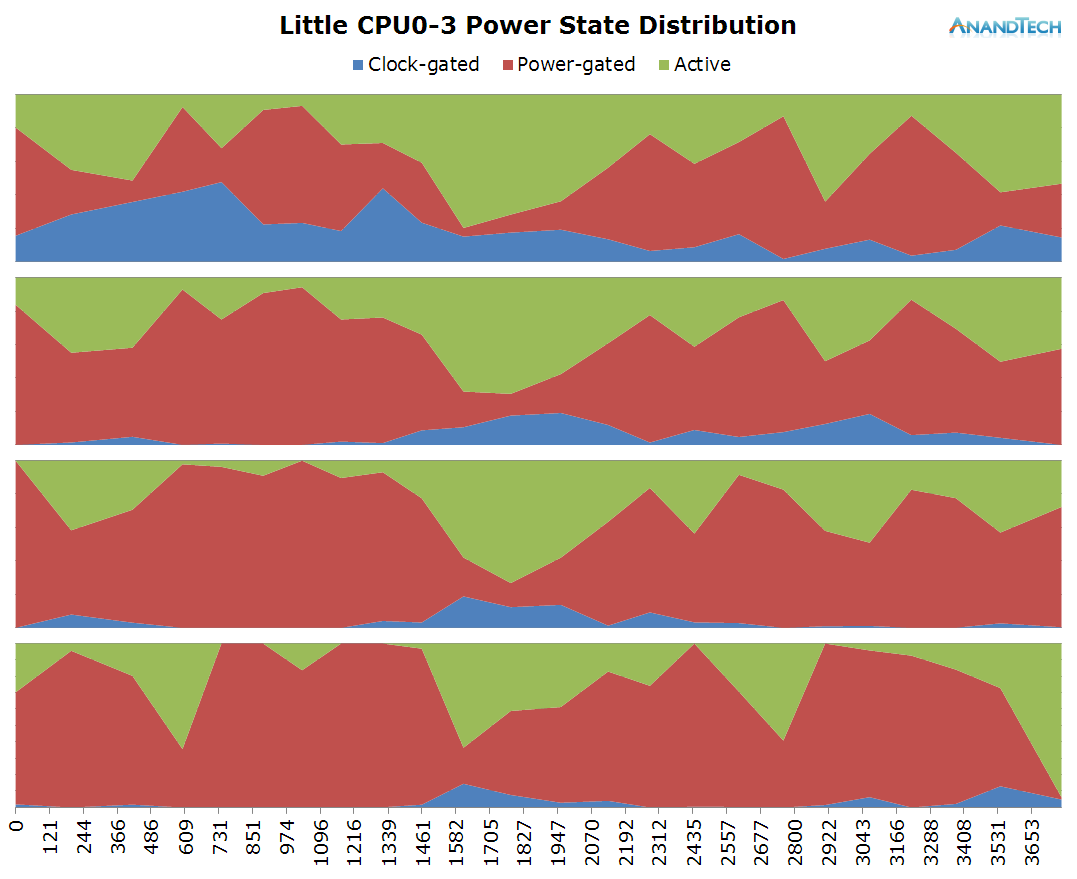

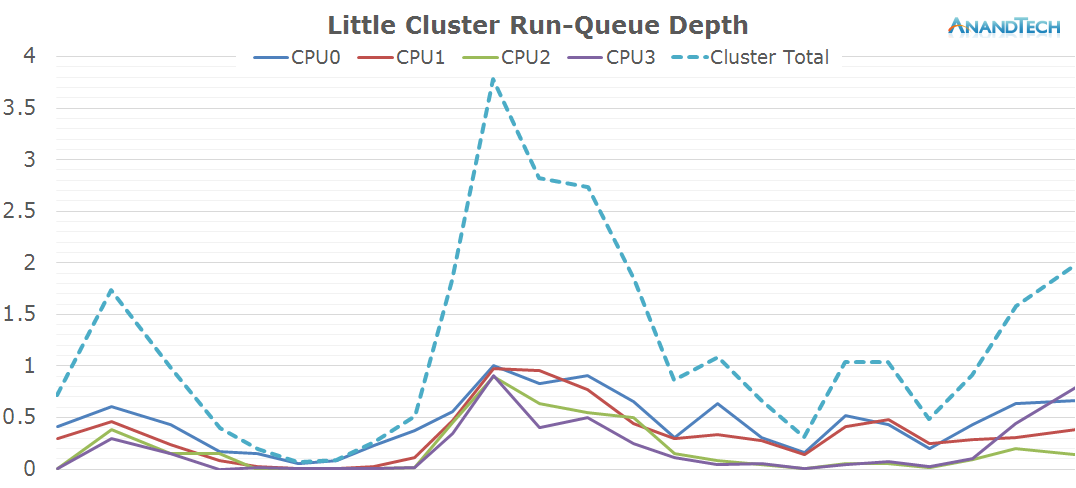
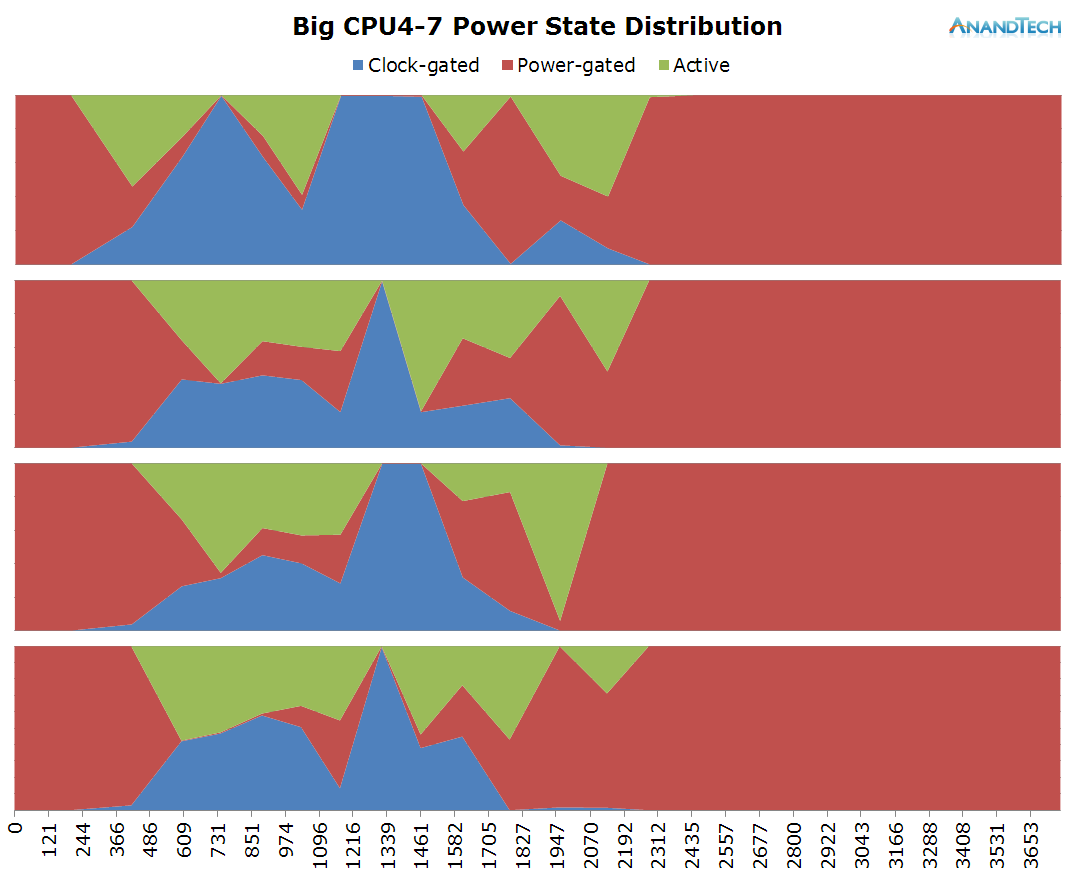
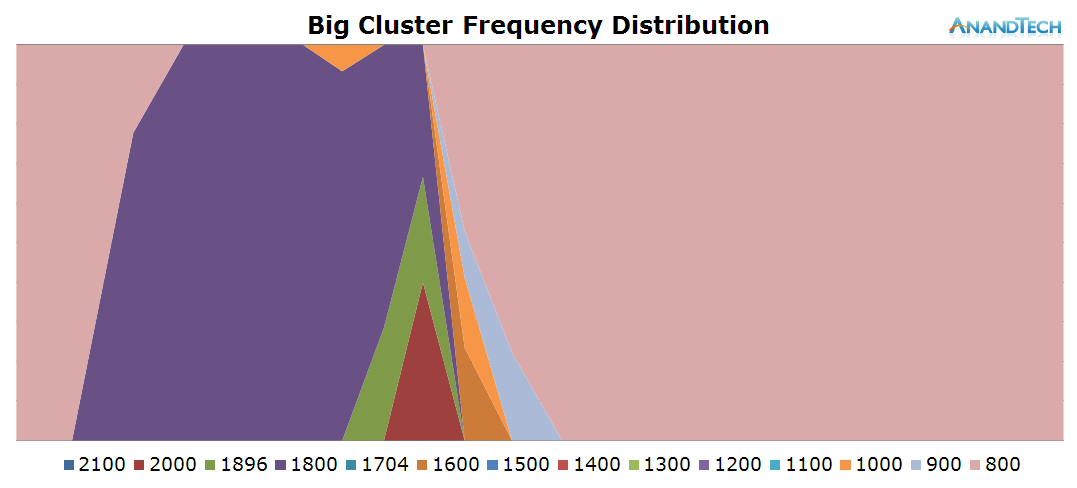
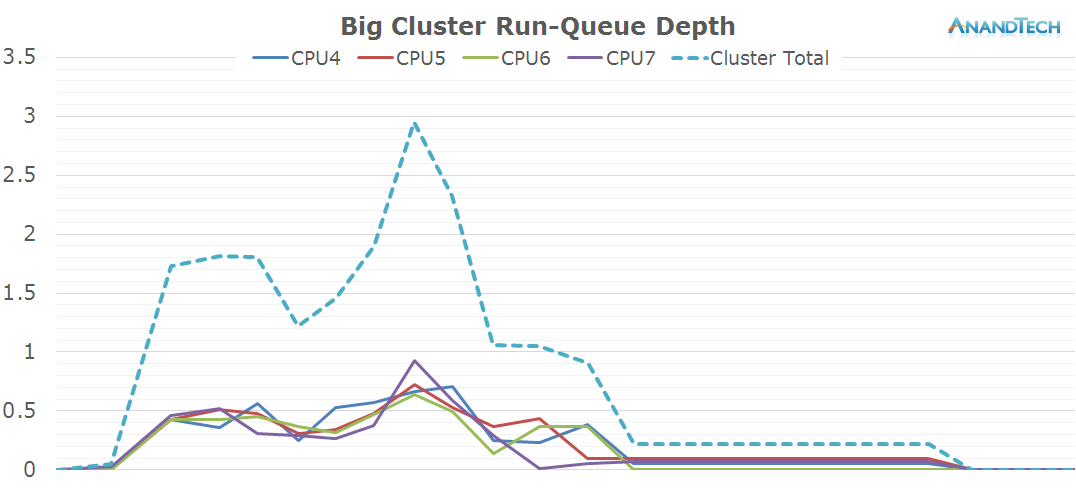
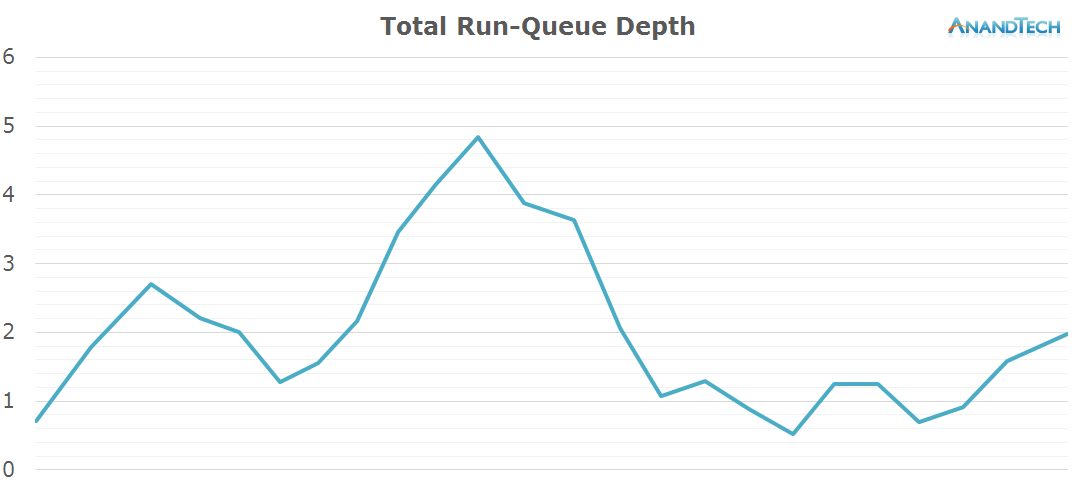








157 Comments
View All Comments
modulusshift - Tuesday, September 1, 2015 - link
Heck yes. And of course I'm interested if anything like this is even remotely possible for Apple hardware, though likely it would require jailbreaks, at least.Andrei Frumusanu - Tuesday, September 1, 2015 - link
Unfortunately basically none of the metrics measured here would be possible to extract from an iOS device.TylerGrunter - Tuesday, September 1, 2015 - link
Add one more vote for the follow up with synthetics.I would also want to see how the multitasking compares with the Snapdragons as they use the different frequency and voltage planes per core instead of the big.LITTLE.
But I guess that would be better to see with the SD 820, as the 810 uses big.LITTLE. Consider it a request for when it comes!
tuxRoller - Wednesday, September 2, 2015 - link
Big.little can use multiple planes for either cluster. The issue is purely implementation, tmk.TylerGrunter - Wednesday, September 2, 2015 - link
big.LITTLE can be use different planes for each cluster but same for all cores in each cluster, Qualcomm SoCs can use different planes for each core, that's the difference and it's a big one.https://www.qualcomm.com/news/onq/2013/10/25/power...
I'm not sure that can be done in big.LITTLE.
tuxRoller - Friday, September 4, 2015 - link
I remember that but that doesn't say that big.LITTLE can't keep each core on its own power plane just that the implementations haven't.soccerballtux - Tuesday, September 1, 2015 - link
to balance everything out-- meh, that doesn't interest me. most of the time I'm concerned with battery life and every-day performance. Android isn't a huge gaming device so absolute performance doesn't interest me.porphyr - Tuesday, September 1, 2015 - link
Please do!ppi - Tuesday, September 1, 2015 - link
Go ahead. This is one of the most interesting performance digging on this site since the random-write speeds on SSDs.jospoortvliet - Friday, September 4, 2015 - link
Yes, this was an awesome and interesting read.